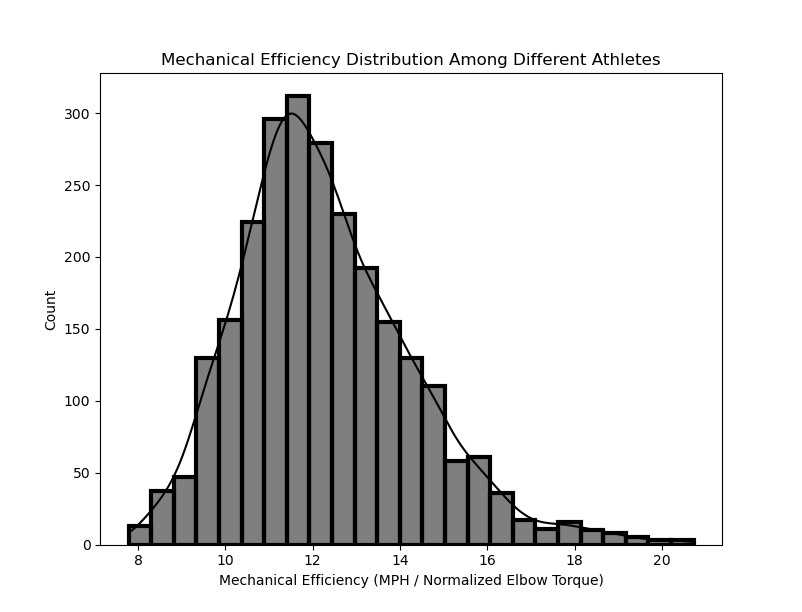Improving Your Mechanics with PULSE

Since its inception, PULSE has existed primarily as a workload tracker. The biomechanics metrics calculated by the sensor are used to drive workload measurements, as opposed to focusing on actual mechanical changes.
Elbow torque doesn’t give you very much insight into what is good or bad. As you throw harder, we typically see elbow torque increase. And who doesn’t want to throw harder? And arm slot can inform you of where your arm is at release, but throwing sidearm vs. over the top isn’t necessarily better. Currently, the mechanical insights taken directly from PULSE are valuable, but they are limited.
We’re aiming to change that by integrating a way to evaluate and improve your mechanics with PULSE.
What are good mechanics?
Performing at the highest levels requires stressing the body; it generally requires more torque to throw harder. However, different athletes can throw the same speed but with different torques. We call this mechanical efficiency—how much velocity can an athlete create while minimizing the per-throw torque that is on their elbow.
Simply put, having good mechanics means you throw harder, and with less elbow torque than your peers.
Using a rudimentary measure of efficiency—throwing velocity divided by normalized elbow torque—we see a wide range of mechanical efficiencies. We also found mechanical efficiency to be related to improved arm health and reduced risk for injury. Improved arm health means fewer missed training days, fewer missed games, and more opportunities to improve as a player.
In an analysis of 800 athletes who assessed and trained at Driveline, the group of athletes who were injured, or became injured while training here, had a lower average mechanical efficiency than the group who didn’t have arm health related issues.
We also know that we can improve an athlete’s mechanics. In the last two years, 44% of the pitchers who have been at Driveline for 6 weeks or more have improved their mechanical efficiency.
Mechanical efficiency matters—it’s not only associated with throwing harder, but with arm health as well. Mechanical efficiency can also be improved—almost half of the pitchers at Driveline are able to improve in this department, many of whom also gained velocity.
How can we evaluate mechanics with PULSE?
By pairing the metrics already generated in PULSE and pairing it with ball velocity, you will be able to evaluate your mechanical efficiency.
As we found in our initial validation, PULSE already reliably measures elbow torque, all you need is a way to reliably measure throwing velocity—a radar gun, a Pocket Radar, a Rapsodo, all will do. By combining those two data points, we will be able to tell you whether your elbow torque is higher or lower than expected.
In the coming months we will be releasing a feature in PULSE that enables you to track your mechanical efficiency by tracking those two things.
Throw with a PULSE sensor + record fastball velocity → evaluate your mechanical efficiency
Even better, you’ll be able to automatically get this insight using our player management software, TRAQ. All you’ll need to do is throw with your PULSE sensor and one of the integrated velocity tracking devices (Pocket Radar, TrackMan, or Rapsodo), and you’ll automatically have the ability to monitor your mechanics.
Now it’s important to note that PULSE won’t be able to give you insight into exactly how your mechanics can be improved, it will only inform you that your mechanics are improving over time.
Think of it like a radar gun. You’ll know how hard you’re throwing, but the radar gun doesn’t tell you how to throw harder. Having insight is the first step. Know where you are so you can know if you’re improving.
Previously, the only way you could evaluate your mechanics was to fly out to Kent, WA and get assessed in our biomechanics lab. Now, we’re able to bring this insight to everyone who doesn’t have their own biomechanics lab, or who can’t fly out to Kent.
We’re bringing the biomechanics lab to your pocket—coming soon.
Comment section